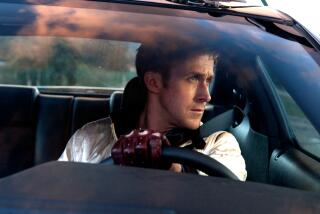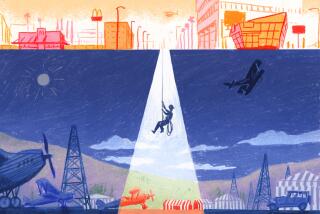For ‘The Gambler,’ filmmaker sought a less familiar side of L.A.
Before he began filming “The Gambler,” English director Rupert Wyatt gave strict instructions to his director of photography.
“Every time we see a palm tree, move the camera,” Wyatt said. “I don’t want to see it. Try to subvert people’s concept of what L.A. is.”
Revealing a less familiar side of L.A. was an important guiding philosophy behind Wyatt’s approach to making the recently released movie, which stars Mark Wahlberg as burned-out English professor and high-stakes gambler Jim Bennett.
“The Gambler” takes viewers on a seven-day personal journey through L.A.’s underbelly, highlighting rarely filmed locations intended to depict the City of Angels in a fresh light.
“I’ve lived in L.A. for six years and have really grown to love it for all of its diversity,” Wyatt said. “One of my influences with this film was [director] Hal Ashby. He really gave the city a heartbeat and warmth. That’s what I wanted to do with this film.”
The Paramount Pictures movie, which cost $25 million to make, has reaped nearly $16 million at the box office since it opened Christmas Day.
Adapted from a 1974 film of the same name, “The Gambler” is an L.A.-based story written by William Monahan, the screenwriter for Martin Scorsese’s “The Departed.”
John Goodman and Jessica Lange also star in the film, which was one of a handful of high-profile studio movies produced in L.A. this year and that benefited from a California film tax credit.
Production activity for feature films in the L.A. area rose 19% last year. But that came mainly from low-budget productions; most major studio movies film outside California to cash in on higher tax breaks and rebates elsewhere. Feature film production in the L.A. area has fallen about 50% from its peak nearly 20 years ago.
Except for a few scenes in Palm Springs and Joshua Tree, “The Gambler” was filmed entirely in Greater Los Angeles.
The movie was unusually location-intensive, filming about 40 locations over 40 days from January through March.
To lend realism and authenticity to the film, producers shunned soundstages and relied mainly on practical locations in Beverly Hills, downtown L.A., Koreatown, Pacific Palisades, Pasadena and Dana Point.
“When you go into a location, there is so much there for you already in the textures in the wall, even the smell,” Wyatt said. “We got to explore locations that haven’t been shot in years.”
Finding fresh locations to represent L.A. fell to veteran location manager Chris Baugh, whose previous projects have included the Oscar-winning movie “Argo,” “Angels and Demons” and the TV series “Arrested Development.”
“Rupert wanted to shoot locations that hadn’t been featured much in the past, which is a pretty difficult task considering how much film production has happened in L.A. over the years,” he said. “So what I did was try to find sites that other companies would usually pass over.”
Among the more challenging locations was a mid-20th century house where Wahlberg’s character lived near Benedict Canyon. Dubbed a “tree house,” it was built on stilts in the woods and wasn’t accessible by car.
Baugh found an abandoned swimming pool at the Pasadena YMCA building designed by architect Julia Morgan to represent the place where gangsters confront Jim.
He spent several nights visiting gritty underground clubs in Koreatown with friends to find the right locations for key gambling scenes.
Besides filming in Koreatown, they aimed their cameras at downtown L.A. alleys, underground tunnels and back stages of landmarks such as the Palace Theatre on South Broadway, where designers converted a cluttered basement into a gambling parlor. The Los Angeles Theatre Centre on Spring Street was the setting for a lecture hall. Other college scenes were filmed on the USC campus.
Although the crew avoided well-known sites, one notable exception was the Playboy Mansion, which doubled as the home of Lange’s character. Baugh convinced producers that viewers wouldn’t necessarily pick out the Gothic-style Holmby Hills residence from other Southern California mansions.
Some locations took weeks of preparation.
“It’s kind of like throwing a full-scale wedding with 200 guests every day for 40 days,” he said. “It’s a lot to handle.”
Twitter: @rverrier
a-et-ct-onlocation-gambler
More to Read
From the Oscars to the Emmys.
Get the Envelope newsletter for exclusive awards season coverage, behind-the-scenes stories from the Envelope podcast and columnist Glenn Whipp’s must-read analysis.
You may occasionally receive promotional content from the Los Angeles Times.







